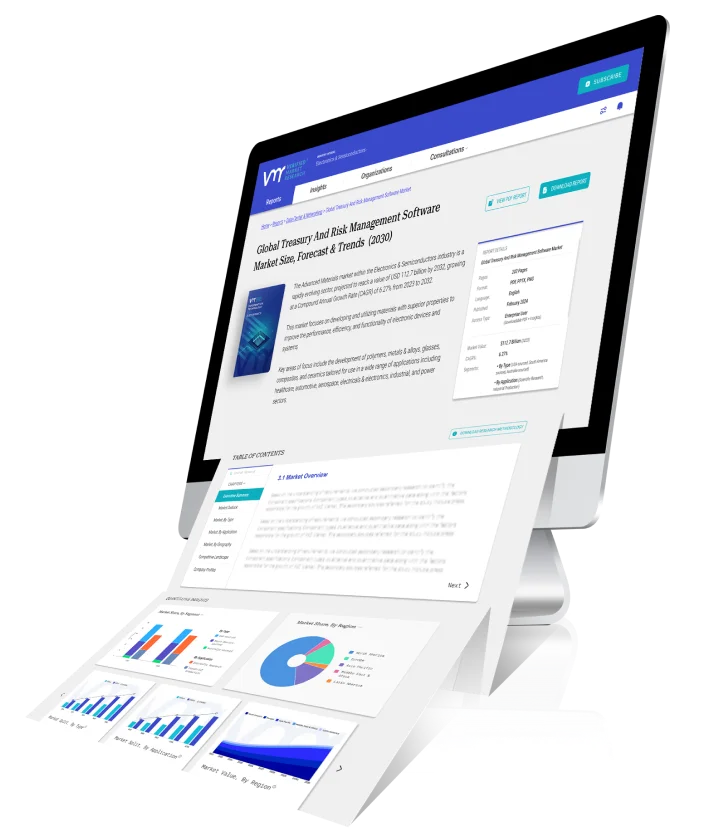Healthcare industries
Surging demand for Healthcare industries coming this 2025-2030
Discover the Rapid Growth of the Global Healthcare industries Industry and the Key Players involved. Drop in you Email ID and get a sample of our latest 2025 Global Semiconductor Industry Report.
Download the 2025 Sample Report on Healthcare industries Now!



Real Research Data Designed For Real Growth
Custom Research Reports on the Healthcare industries Industries - Global/By Country/By Type/By Use

Your Custom Market Industry Insights Dashboard
Register and Get Access to your own Markets Industry and Research Dashboard. Login to your Dashboard and Access ad request Real-Time Data to any Industry.
Healthcare industries
FAQs
What are the current trends driving growth in the global healthcare industries?
The global healthcare industry is being shaped by several transformative trends, including:
Digital Health and Telemedicine: The adoption of digital health technologies, such as telemedicine, wearable health devices, and mobile health applications, has surged, particularly following the COVID-19 pandemic. These technologies improve access to care and enhance patient monitoring and engagement.
Artificial Intelligence (AI) and Machine Learning: AI is revolutionizing diagnostics, treatment planning, and drug discovery. Predictive analytics and machine learning models are also enabling better resource allocation and outcome predictions.
Personalized Medicine: Advances in genomics and biotechnology are leading to personalized treatments tailored to an individual’s genetic makeup, resulting in more effective and targeted therapies.
Aging Population: The rising number of elderly individuals globally has increased the demand for long-term care services, chronic disease management, and geriatric healthcare solutions.
Focus on Mental Health: Increasing awareness and destigmatization of mental health issues have led to higher investments in mental health services and therapies.
Value-Based Care Models: Healthcare providers are shifting towards value-based care, emphasizing outcomes and cost-efficiency over service volume.
What challenges does the global healthcare industry face today?
The healthcare industry faces several complex challenges, including:
Cost Management: Rising healthcare costs remain a major concern for both providers and patients, particularly in countries with underfunded healthcare systems.
Workforce Shortages: There is a global shortage of healthcare professionals, exacerbated by burnout and the increasing demand for healthcare services.
Access to Care: Disparities in access to healthcare, particularly in rural and low-income areas, remain a persistent issue globally.
Data Security and Privacy: The rise of digital health tools has made healthcare data more vulnerable to cyberattacks, necessitating stringent data protection measures.
Regulatory Hurdles: The healthcare industry is highly regulated, and navigating varying global compliance requirements can be challenging for companies.
Pandemic Preparedness: Lessons from COVID-19 highlight the need for robust systems to handle future health crises.
How is technology transforming the global healthcare industry?
Technology is a game-changer in healthcare, with impacts in several areas:
Diagnostics and Imaging: AI-powered diagnostic tools improve accuracy and speed in identifying diseases such as cancer and neurological disorders.
Wearable Technology: Devices like smartwatches and fitness trackers enable continuous health monitoring and early detection of anomalies.
Electronic Health Records (EHRs): Digital records streamline patient information sharing among healthcare providers, enhancing collaboration and reducing errors.
Robotics in Surgery: Robotic-assisted surgeries offer precision and reduce recovery times for patients.
Blockchain: This technology ensures secure and transparent management of medical data, improving trust and data sharing among stakeholders.
Pharmaceutical Innovations: AI accelerates drug discovery, cutting down costs and development time for new medicines.
What role does government policy play in shaping the global healthcare industry?
Government policies significantly influence healthcare by:
Funding and Subsidies: Governments allocate budgets for public healthcare services, research, and infrastructure development.
Regulations: Stringent regulations ensure the safety, efficacy, and ethical standards of drugs, devices, and medical services.
Universal Healthcare Access: Many nations aim to provide universal healthcare to their citizens, reducing disparities in access and affordability.
Health Crisis Management: Governments establish frameworks for pandemic preparedness, vaccination programs, and emergency response systems.
Encouraging Innovation: Policies often include grants, tax incentives, and partnerships to foster R&D in medical technology and pharmaceuticals.
For instance, the U.S. Affordable Care Act expanded access to healthcare, while Europe’s General Data Protection Regulation (GDPR) improved patient data privacy.
Which regions are experiencing the fastest growth in the global healthcare industry?
Several regions are driving growth in the healthcare industry:
Asia-Pacific: Countries like India, China, and Japan are witnessing rapid growth due to rising healthcare investments, an expanding middle class, and increased government initiatives.
North America: The U.S. continues to lead due to its strong pharmaceutical sector, high adoption of technology, and significant R&D funding.
Europe: Aging populations in countries like Germany, France, and the UK are driving demand for healthcare services and products.
Middle East and Africa: Investment in healthcare infrastructure and medical tourism is fueling growth, especially in the UAE and South Africa.
Latin America: Brazil and Mexico are expanding their healthcare services, driven by urbanization and increased public and private spending.
What is the future outlook for the global healthcare industries?
The future of healthcare looks promising, with several trends likely to shape the industry:
Increased AI Adoption: AI will continue to drive advancements in diagnostics, patient management, and personalized medicine.
Expansion of Telehealth: Telemedicine will become more mainstream, providing cost-effective solutions for remote and underserved populations.
Focus on Sustainability: Healthcare providers and manufacturers will adopt sustainable practices, including energy-efficient facilities and eco-friendly packaging.
Global Collaboration: International partnerships will grow, particularly in tackling pandemics, vaccine distribution, and medical research.
Biotechnology Advancements: Breakthroughs in gene editing, stem cell therapy, and biopharmaceuticals will redefine treatment paradigms.
Decentralized Trials: The adoption of decentralized clinical trials will make drug development more efficient and inclusive.
Overall, the global healthcare industry is poised for sustained growth, driven by technological advancements, evolving patient needs, and increased investments.
Healthcare industries
Talk with our Industry Research Specialist
Connect and Speak directly with one of our leading sIndustry Research Specialists and they can help customize your Research Report to match your specifications and needs.